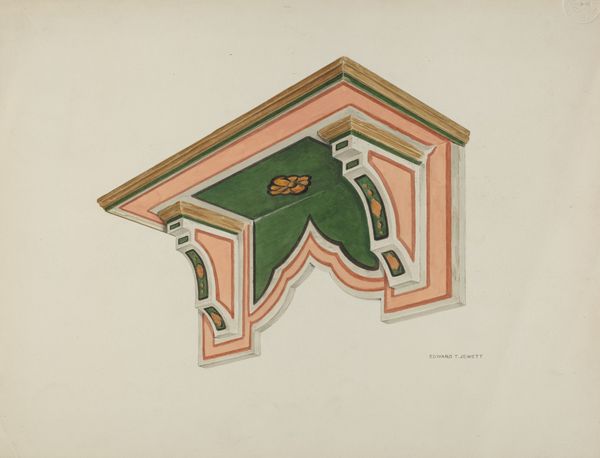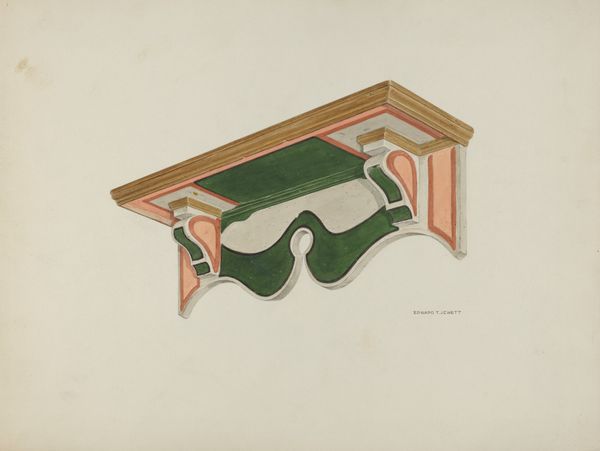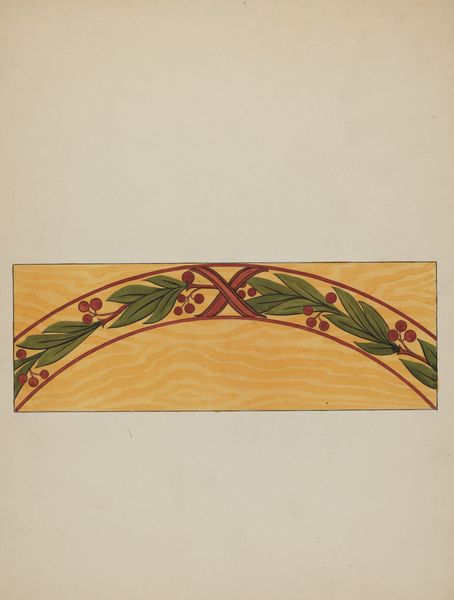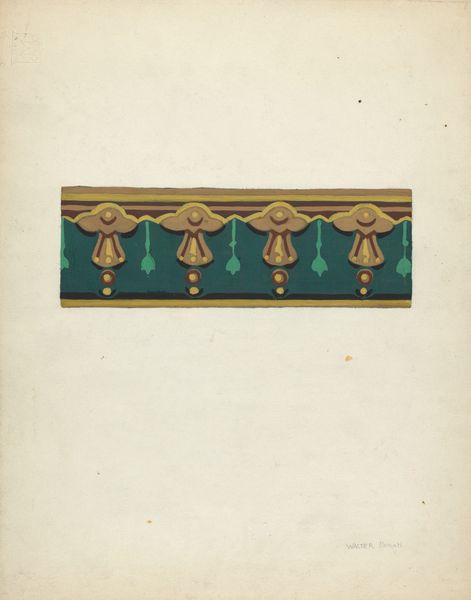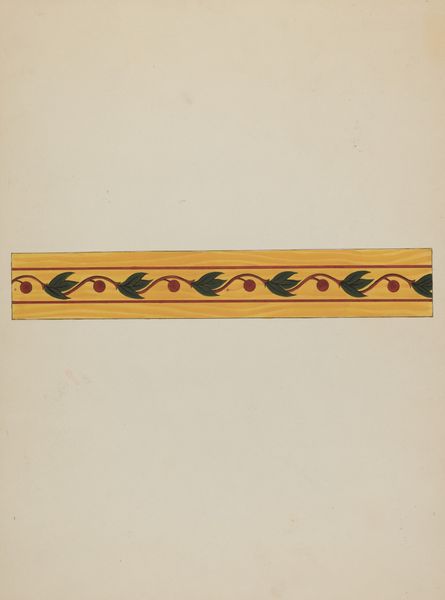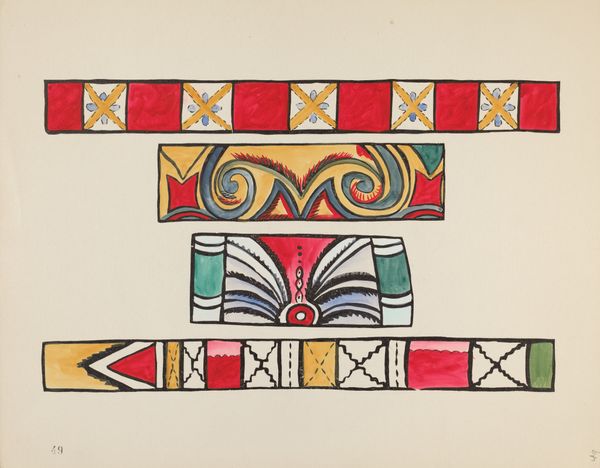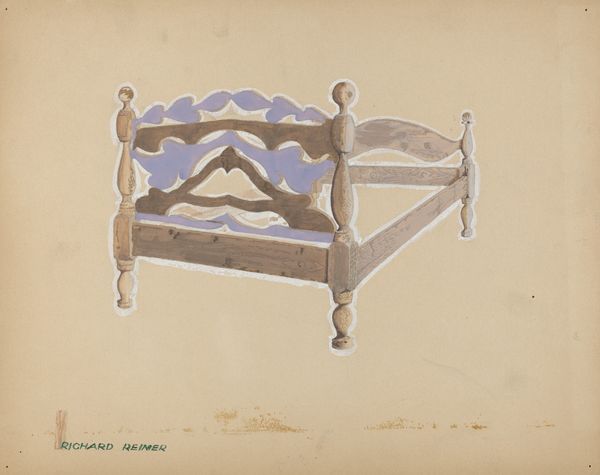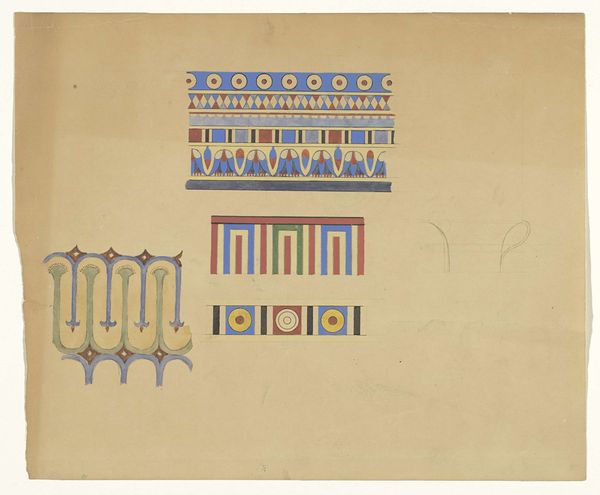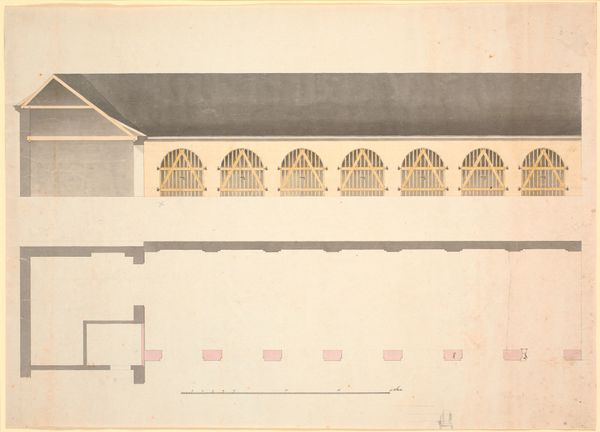
drawing, paper, watercolor
#
drawing
#
paper
#
watercolor
#
coloured pencil
#
watercolour illustration
#
decorative-art
Dimensions: overall: 24.3 x 34.9 cm (9 9/16 x 13 3/4 in.) Original IAD Object: 33 1/2" high; 15" wide; 14 1/2" deep
Copyright: National Gallery of Art: CC0 1.0
Editor: This is Edward Jewett's "Wall Bracket," created sometime between 1935 and 1942 using watercolor and colored pencil on paper. The vibrant colors and clean lines give it a somewhat theatrical feel. How does this drawing speak to you? Curator: Well, seeing a design drawing like this raises several questions about the art world and the decorative arts during the interwar period. Who was Jewett designing for, and how were these designs meant to circulate? Was this intended for mass production or for a more bespoke clientele? Editor: That's fascinating. I hadn't thought about the intended audience. The precise lines make me wonder about industrial design processes versus more handcrafted traditions. Curator: Exactly. This straddles that line. On the one hand, there's a sense of handcrafted detail with the watercolor washes. On the other hand, the symmetry and crispness point towards an interest in mass production techniques gaining popularity during that time. What do the colors say to you? Editor: The palette strikes me as somewhat unusual— the strong orange and the almost-emerald green are quite bold. Were those popular colors in interior design at the time? Curator: It's likely that these colours were specifically selected to coordinate with other design elements in the intended space. Colors often carry social and political meaning too. We would have to research period catalogs and magazines to fully grasp its implications. How interesting is it that the art object only becomes “art” with context, wouldn’t you say? Editor: Absolutely! Looking at art this way definitely gives me more appreciation for the processes behind the design. Curator: For me, it shows that "art" isn't made in a vacuum; it's always entangled with economics, society, and industry.
Comments
No comments
Be the first to comment and join the conversation on the ultimate creative platform.
